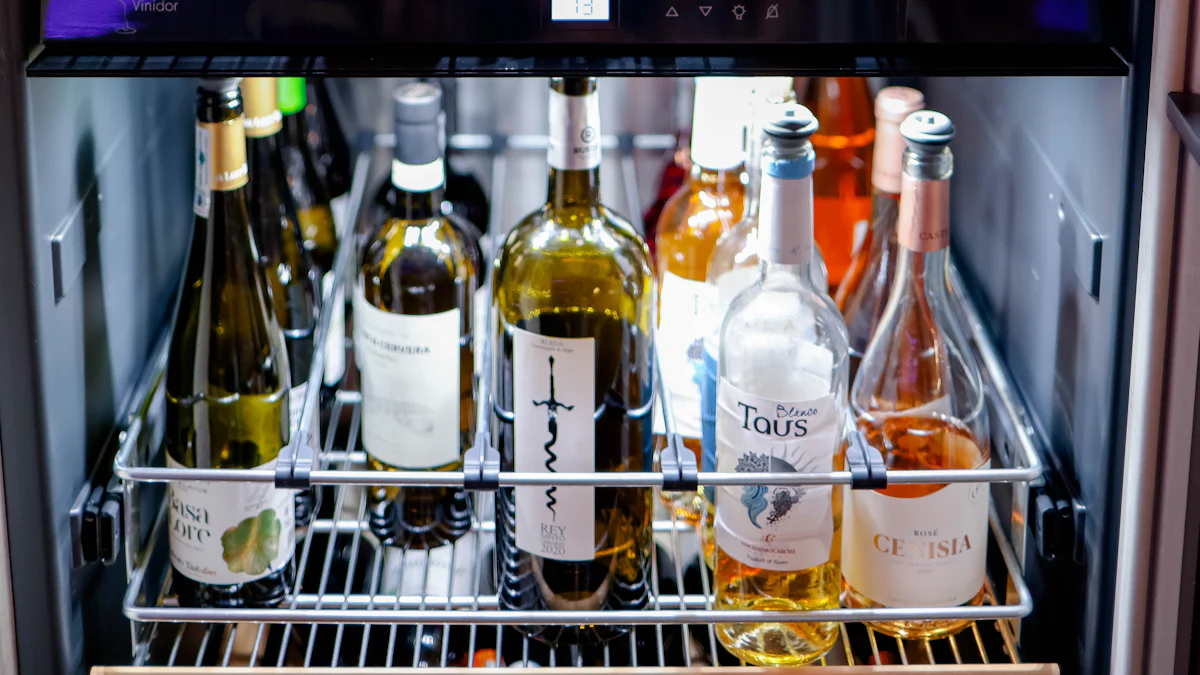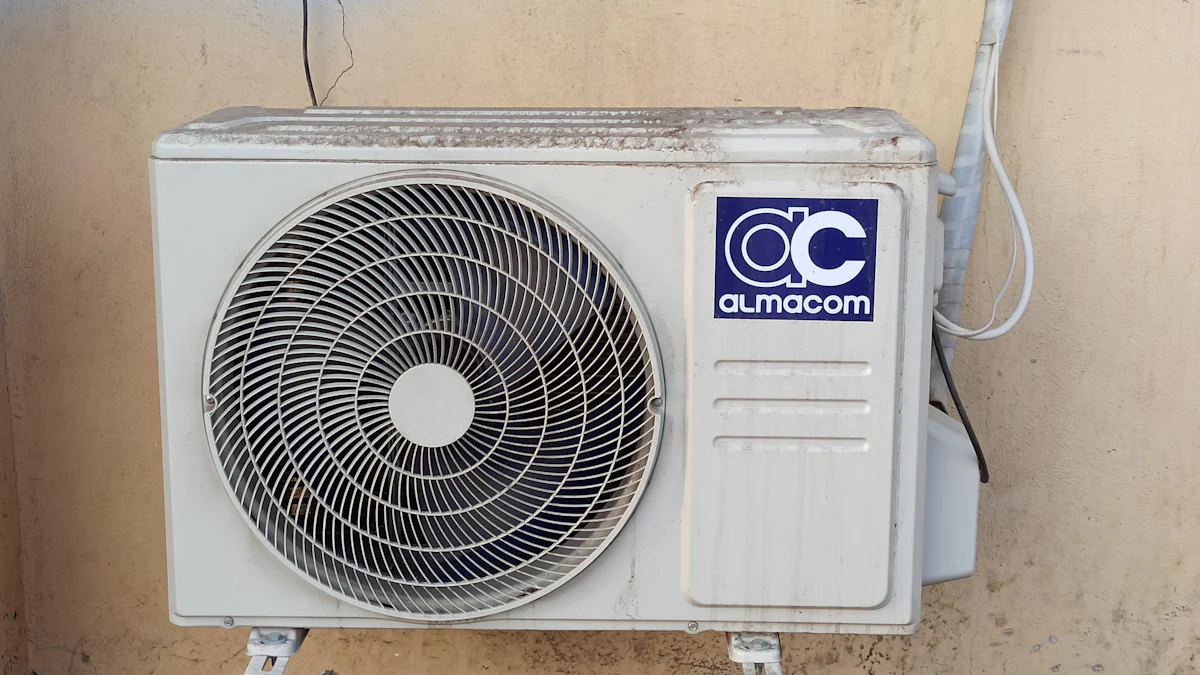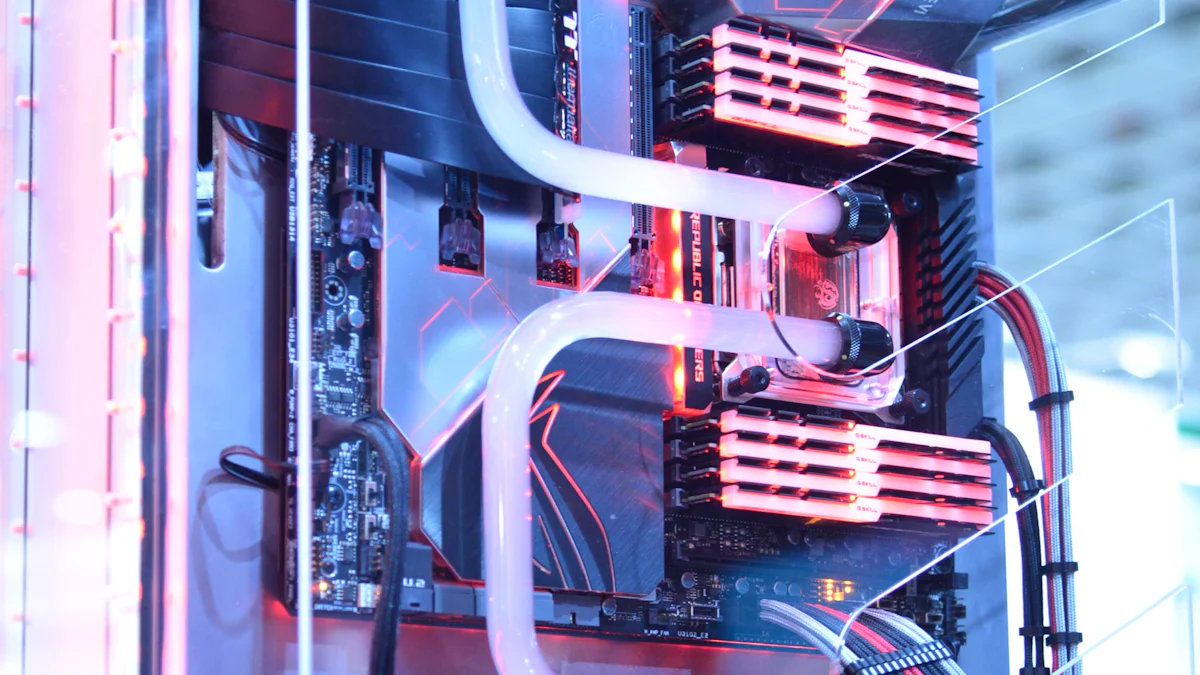Revolutionizing Refrigeration with CO2 Systems

Transcritical CO2 refrigeration systems represent a groundbreaking shift in sustainable cooling technology. By utilizing carbon dioxide as a refrigerant, these systems significantly reduce the environmental impact associated with traditional refrigerants. Their lower global warming potential and efficient operation in warmer climates make them an ideal choice for eco-conscious industries. With over 35,000 systems in use globally, they have become synonymous with sustainable cooling solutions. The CO2 transcritical unit also offers high efficiency, enhanced heat transfer properties, and compact designs, making it a vital innovation in the pursuit of environmentally friendly refrigeration.
Understanding Transcritical CO2 Refrigeration Systems

What Are Transcritical CO2 Refrigeration Systems?
Transcritical CO2 refrigeration systems operate using carbon dioxide as a refrigerant in a supercritical state. Unlike traditional refrigeration systems that rely on synthetic refrigerants such as hydrofluorocarbons (HFCs), these systems utilize CO2, a natural refrigerant with a low global warming potential (GWP) and zero ozone depletion potential (ODP). This makes them an environmentally friendly alternative for refrigeration and air conditioning applications.
The term "transcritical" refers to the system's ability to function above the critical point of carbon dioxide, where the refrigerant exists in a state that is neither fully liquid nor gas. In this state, the system replaces the conventional condenser with a gas cooler, which facilitates heat rejection without condensation. This unique operational characteristic allows transcritical CO2 refrigeration systems to achieve high efficiency, particularly when paired with advanced designs tailored for varying climate conditions.
These systems are gaining traction globally due to their compliance with stringent environmental regulations aimed at reducing greenhouse gas emissions. Governments and industries are increasingly adopting these systems to phase out traditional refrigerants with high GWP, aligning with the global push for sustainable solutions.
Environmental and Operational Benefits of CO2 Transcritical Units
The adoption of CO2 transcritical units offers significant environmental and operational advantages. From an environmental perspective, these systems drastically reduce the environmental impact of refrigeration. Traditional refrigerants like HFCs contribute heavily to global warming. In contrast, CO2 has a GWP of 1, making it a much safer choice for the planet. Additionally, its natural abundance and non-toxic properties further enhance its appeal as a sustainable refrigerant.
Operationally, transcritical CO2 refrigeration systems excel in performance. Their ability to operate at higher pressures enables effective heat reclamation, which proves beneficial in applications requiring both cooling and heating. The superior heat transfer properties of CO2 allow for the use of smaller and more compact components, reducing the overall size and weight of the system. This not only saves space but also improves energy efficiency.
Moreover, advancements in system designs have addressed challenges associated with warm climates. By incorporating high ambient strategies, these systems maintain efficiency even in regions with elevated temperatures. This adaptability makes them suitable for a wide range of applications, from commercial refrigeration to industrial cooling.
"Transcritical CO2 systems represent a promising technology to keep things cold without harming the planet," as highlighted in recent studies. Their innovative design and eco-friendly operation position them as a leading solution in the transition toward sustainable refrigeration.
Challenges in CO2 Transcritical Refrigeration
Performance Issues in Warm Climates
Transcritical CO2 refrigeration systems face notable performance challenges in regions with high ambient temperatures. The efficiency of these systems decreases in warm climates due to the formation of flash gas vapor, which disrupts the cooling process. Unlike traditional refrigerants, CO2 operates at higher pressures, making it more sensitive to temperature fluctuations. This sensitivity often results in increased energy consumption and reduced system reliability.
To address these issues, engineers have developed innovative solutions. One such advancement involves the integration of a parallel compression stage. This design modification minimizes the energy losses caused by flash gas, ensuring stable operation even in hot environments. By redirecting excess vapor to a dedicated compressor, the system reduces strain on the primary components and enhances overall efficiency.
"Parallel compression has emerged as a game-changer for CO2 systems in warm climates," according to industry experts. This approach not only improves energy performance but also expands the applicability of transcritical CO2 refrigeration systems to regions previously deemed unsuitable.
Additionally, manufacturers have introduced advanced gas cooler designs tailored for high-temperature conditions. These gas coolers optimize heat rejection, enabling the system to maintain efficiency despite external heat stress. Such innovations highlight the adaptability of CO2 transcritical units and their potential to overcome climate-related limitations.
Technical and Operational Challenges
The adoption of transcritical CO2 refrigeration systems also presents several technical and operational hurdles. High operating pressures, a defining characteristic of these systems, demand robust components capable of withstanding extreme conditions. Compressors, valves, and piping must meet stringent durability standards, which can increase initial investment costs.
System complexity poses another challenge. Unlike conventional refrigeration units, CO2 transcritical systems require precise control mechanisms to manage pressure and temperature variations. Advanced monitoring tools and automated controls are essential to ensure optimal performance. However, these technologies often necessitate specialized training for technicians, creating a knowledge gap in the workforce.
Maintenance requirements further complicate operations. The high-pressure nature of CO2 systems accelerates wear and tear on components, leading to more frequent servicing needs. Businesses must allocate additional resources for maintenance, which can deter smaller enterprises from adopting this technology.
Despite these obstacles, ongoing research continues to address these challenges. Enhanced materials, smarter control systems, and streamlined designs are paving the way for more reliable and cost-effective solutions. These efforts underscore the industry's commitment to reducing the environmental impact of refrigeration while ensuring operational feasibility.
Innovations and Solutions in CO2 Transcritical Technology
Advanced System Designs for CO2 Transcritical Units
Advancements in system designs have significantly enhanced the performance of transcritical CO2 refrigeration systems. Engineers have developed innovative configurations to address challenges such as high ambient temperatures and energy efficiency. One notable improvement involves the integration of ejectors, which recover energy from high-pressure refrigerant streams. This process reduces energy consumption and improves overall system efficiency.
Parallel compression has also emerged as a transformative design feature. By redirecting excess vapor to a dedicated compressor, this approach minimizes energy losses and stabilizes system performance in warm climates. These advanced designs not only optimize energy usage but also expand the applicability of CO2 transcritical units to regions with extreme weather conditions.
"Continuous innovation in system designs is essential for minimizing environmental impact and enhancing operational efficiency," as highlighted in recent research. These developments underscore the industry's commitment to sustainable refrigeration solutions.
Smarter Controls and Monitoring in Transcritical CO2 Refrigeration Systems
The integration of smarter controls and monitoring technologies has revolutionized the operation of transcritical CO2 refrigeration systems. IoT-enabled devices and advanced sensors now allow real-time monitoring of system performance. These tools provide valuable data on pressure, temperature, and energy consumption, enabling operators to make informed decisions and optimize efficiency.
Automated control systems have further streamlined operations. By adjusting system parameters based on environmental conditions, these controls ensure consistent performance while reducing energy waste. Predictive maintenance features, powered by artificial intelligence, identify potential issues before they escalate, minimizing downtime and maintenance costs.
"Smart controls and IoT technologies have made CO2 systems more reliable and efficient," according to industry experts. These innovations enhance operational precision and reduce the environmental impact of refrigeration systems.
Enhanced Components and Materials for CO2 Systems
The development of enhanced components and materials has played a crucial role in improving the reliability and efficiency of CO2 transcritical units. Compressors, a vital component, have undergone significant upgrades to withstand the high pressures associated with CO2 systems. Modern compressors now feature robust designs and advanced materials that ensure durability and optimal performance.
Heat exchangers have also seen substantial improvements. Enhanced designs maximize heat transfer efficiency, reducing energy consumption and improving system reliability. Additionally, the use of corrosion-resistant materials extends the lifespan of these components, making them more cost-effective in the long term.
Expansion valves and ejectors have been refined to handle the unique properties of CO2 as a refrigerant. These components now operate with greater precision, ensuring stable performance across various applications. Such advancements highlight the industry's dedication to overcoming technical challenges and driving innovation in refrigeration technology.
"Enhanced components and materials are pivotal in advancing CO2 transcritical technology," as noted in recent studies. These improvements ensure that systems remain efficient, reliable, and environmentally friendly.
Key Components of CO2 Transcritical Systems

The Role of Compressors in CO2 Transcritical Units
Compressors serve as the backbone of transcritical CO2 refrigeration systems, driving the entire cooling process. These components compress the CO2 refrigerant to high pressures, enabling it to transition into a supercritical state. This process is essential for achieving the desired cooling effect and maintaining system performance.
Modern CO2 compressors are designed to handle the unique demands of transcritical systems. They operate under high working pressures and exhibit compact structures, making them suitable for various applications. The six primary types of compressors—Piston, Rolling Piston, Swing Piston, Scroll, Vane, and Screw—offer flexibility in system design. Each type caters to specific operational needs, ensuring optimal performance across diverse settings.
"CO2 compressors are characterized by their ability to manage large pressure differences and deliver high cooling efficiency," as noted in industry reports. These features make them indispensable in advancing the efficiency and reliability of CO2 transcritical units.
The integration of advanced materials and engineering techniques has further enhanced compressor durability. These improvements ensure that compressors withstand the rigorous demands of high-pressure operations, reducing maintenance requirements and extending their lifespan. By optimizing compressor performance, manufacturers contribute significantly to overall system efficiency.
Gas Coolers and Heat Exchangers in Transcritical CO2 Refrigeration Systems
Gas coolers and heat exchangers play a pivotal role in the operation of transcritical CO2 refrigeration systems. Unlike traditional condensers, gas coolers facilitate heat rejection without condensation, a critical function in transcritical cycles. This unique design allows the system to operate efficiently even under varying environmental conditions.
Heat exchangers, on the other hand, maximize the transfer of thermal energy between the refrigerant and the surrounding environment. Enhanced designs and corrosion-resistant materials have improved their performance and durability. These advancements reduce energy consumption and ensure consistent operation over time.
"The use of advanced gas coolers and heat exchangers has revolutionized the efficiency of CO2 systems," according to recent studies. These components enable the system to maintain high performance, even in challenging climates.
Compact designs further enhance the appeal of these components. Smaller gas coolers and heat exchangers save space and reduce the overall weight of the system. This feature proves particularly beneficial in commercial applications where space constraints are a concern. By improving heat transfer efficiency, these components contribute directly to the system's energy-saving capabilities.
Expansion Valves and Ejectors in CO2 Systems
Expansion valves and ejectors are critical for regulating the flow and pressure of the refrigerant within the system. Expansion valves control the refrigerant's transition from high to low pressure, ensuring precise temperature regulation. Their refined designs now accommodate the unique properties of CO2, delivering stable performance across various applications.
Ejectors, a relatively recent innovation, have transformed the efficiency of CO2 systems. These devices recover energy from high-pressure refrigerant streams, reducing energy losses and enhancing cooling capacity. Studies have shown that ejectors can significantly improve the coefficient of performance (COP) compared to basic CO2 systems.
"Ejectors in CO2 refrigeration cycles represent a breakthrough in improving system efficiency," as highlighted in industry research. Their ability to optimize energy usage makes them a valuable addition to modern refrigeration systems.
The combination of advanced expansion valves and ejectors ensures that CO2 transcritical units operate with precision and efficiency. These components not only enhance the system's performance but also expand its applicability to a broader range of industries. By addressing the challenges of high-pressure operations, they pave the way for more sustainable and reliable refrigeration solutions.
Future Trends and Research in CO2 Refrigeration
Emerging Technologies in CO2 Transcritical Units
The refrigeration industry continues to innovate, with emerging technologies reshaping the capabilities of CO2 transcritical units. One of the most notable advancements is the integration of artificial intelligence (AI) and machine learning. These technologies enable systems to predict operational inefficiencies and optimize performance in real time. By analyzing data from sensors, AI-driven systems adjust parameters to maintain consistent cooling while minimizing energy consumption.
Another breakthrough involves the development of ejector technology. Ejectors recover energy from high-pressure refrigerant streams, significantly improving system efficiency. This innovation addresses one of the primary challenges of CO2 systems—performance in warm climates. By reducing energy losses, ejectors enhance the overall reliability and applicability of these systems.
"Ejector technology has revolutionized the efficiency of CO2 refrigeration systems," according to recent studies. This advancement underscores the industry's commitment to sustainable and high-performing solutions.
Additionally, hybrid systems that combine CO2 with other natural refrigerants are gaining traction. These configurations leverage the strengths of multiple refrigerants to achieve superior performance across diverse applications. Such innovations highlight the potential of CO2 transcritical units to adapt to evolving industry demands.
Expanding Applications of Transcritical CO2 Refrigeration Systems
The versatility of transcritical CO2 refrigeration systems has led to their adoption across a growing range of industries. Supermarkets and food retail chains remain the primary users, as these systems align with the sector's need for efficient and eco-friendly cooling. CO2 refrigeration systems also reduce operational costs by lowering energy consumption, making them an attractive choice for businesses.
Beyond food retail, the pharmaceutical industry has begun to embrace CO2 systems for temperature-sensitive storage. The precise control offered by these systems ensures the integrity of medical products, meeting stringent regulatory requirements. Industrial applications, such as cold storage warehouses and food processing facilities, are also transitioning to CO2 refrigeration due to its reliability and environmental benefits.
"CO2 refrigeration systems offer a significant stride towards environmental sustainability," as highlighted in industry reports. Their expanding applications demonstrate their potential to transform multiple sectors.
Emerging markets, particularly in regions with warm climates, are exploring the use of CO2 systems. Innovations like parallel compression and advanced gas coolers have made these systems viable in high-temperature environments. This expansion into new geographic areas reflects the growing recognition of CO2 refrigeration as a global solution.
Ongoing Research and Development in CO2 Systems
Research and development efforts continue to drive the evolution of CO2 refrigeration technology. Scientists and engineers are focusing on enhancing system components to improve durability and efficiency. Compressors, heat exchangers, and expansion valves are undergoing significant upgrades to withstand the high pressures associated with CO2 systems.
Control strategies represent another area of active research. Advanced algorithms are being developed to optimize system performance under varying conditions. These strategies aim to reduce energy consumption while maintaining consistent cooling, addressing one of the industry's most pressing challenges.
"The latest optimization research works on system components, cycle structure, mixed refrigerants, and control strategies are being summarized to improve transcritical CO2 systems," according to recent findings. These efforts highlight the industry's dedication to innovation.
Researchers are also exploring the use of mixed refrigerants to enhance the performance of CO2 systems. By combining CO2 with other natural refrigerants, these mixtures aim to overcome limitations such as high operating pressures and temperature sensitivity. This approach holds promise for expanding the applicability of CO2 refrigeration to even more industries.
The future of CO2 refrigeration lies in continuous innovation. As research progresses, these systems will become more efficient, reliable, and accessible, solidifying their role as a cornerstone of sustainable cooling technology.
CO2 transcritical refrigeration systems deliver substantial environmental and operational benefits. By utilizing CO2, a natural refrigerant with low global warming potential, these systems align with global efforts to combat climate change. Their adaptability and efficiency help businesses meet sustainability goals while reducing costs associated with regulatory compliance.
Innovations in system design and technology continue to address challenges, enhancing performance and reliability. These advancements pave the way for broader adoption across industries. As the demand for eco-friendly solutions grows, CO2 systems stand poised to revolutionize refrigeration, offering a sustainable and forward-thinking alternative for a greener future.
See Also
CO2 Refrigeration: An Eco-Friendly Cooling Alternative
Three Key Advantages of CO2 Refrigeration Over Conventional
Unveiling the ARKREF CO₂ Initiative: Advances in Transcritical Cooling
Three Cutting-Edge CO₂ Transcritical Refrigeration Examples from ARKREF
Investigating ARKREF's CO₂ Transcritical Refrigeration Unit Innovations

